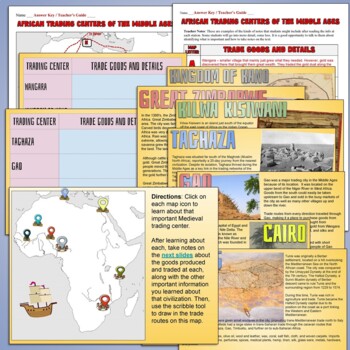African Trade Routes of the Middle Ages Lesson
- PDF
- Google Apps™

What educators are saying
Description
This engaging lesson on African Trade Routes of the Middle Ages covers Trans-Saharan trade, the Gold-Salt Trade, and Africa's important trading centers.
Students read about 8 important trading centers, including Gao, Great Zimbabwe, Cairo, Tunis, and other cities across Africa during the Middle Ages. These readings can be done as stations around your room, at student desks, or through the Google Slides digital option.
As students learn about the civilizations and trade routes they complete a map of the cities and trade routes and take notes on the included worksheets.
A teacher directions page for the lesson is included with details on how to conduct the lesson along with an answer key for the student worksheets.
Following the activity, there is reading and worksheet on Great Zimbabwe as well as other options you might prefer for your class.
This lesson can also be downloaded as part of my Mesoamerican and African Civilizations Unit Plan Bundle.
Thank you for checking it out!





